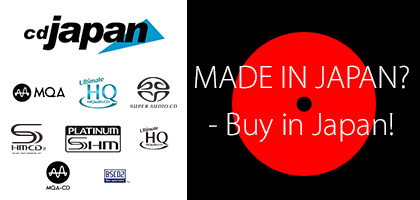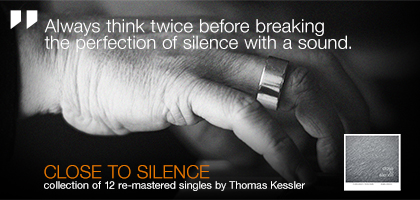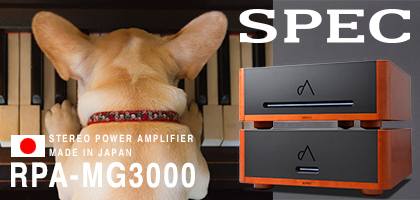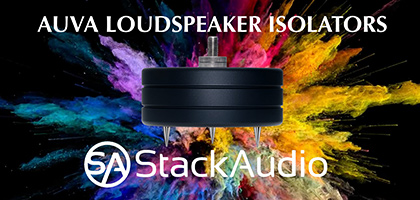 Contents
Contents
No. 257 October 2025
- COVER REVIEW: ANCIENT AUDIO Silver Grand Mono Mk II ⸜ power amplifier • monoblocks » POLAND • Kraków
- KRAKOW SONIC SOCIETY № 153: 30 years of ANCIENT AUDIO » POLAND • Kraków
- FEATURE ⸜ music & technology: HISAO NATSUME presents - In search for the lost great pianism Chopin tradition » part 2 (France) » JAPAN • Tokyo
- REVIEW: AUDIOPHONIQUE Classic AP 300D ⸜ power amplifier » POLAND • Pruszków
- REVIEW: AVATAR AUDIO Holophony No. 1 ⸜ loudspeakers • floor-standing » POLAND • Osowicze
- REVIEW: DIVALDI Gold PA One ⸜ integrated amplifier » POLAND • Kraków
- REVIEW: J.SIKORA Aspire ⸜ turntable (deck + tonearm) » POLAND • Lublin
- REVIEW: MB AUDIO CABLE Silver ⸜ analog interconnect ⸜ RCA » POLAND • Turza Śląska
- REVIEW: XACT N1 ⸜ LAN switch » POLAND • Wrocław

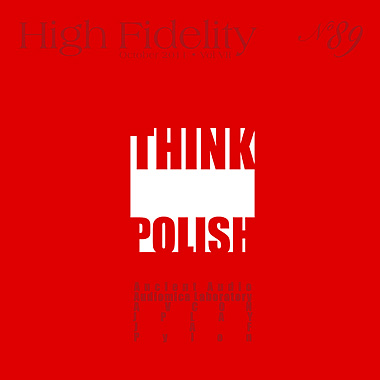
|
THE FIRST

In the history of each country we can find audio devices which became iconic. Let us think the BBC LS3/5A and Quad ESL57 loudspeakers in Britain, or the Krell KSA50 amplifier and the Ed Vilchur’s Acoustic Research AR-1 turntable in the USA. Every one of them was in its time innovative and their legend is still alive today, repeated and processed by the manufacturers and users alike.
Also in the minds of Polish music lovers – audiophiles there are some special places for products such as the iconic Tonsil Altus series of loudspeakers, stereo receivers Radmor (for example the model 5102), the WS-503 Unitra amplifier, or the Daniel G-1100fs turntable. 
There is, however, one product that surely and easily, albeit in a smaller scale, meets the two above criteria – a small box housing DAC The First from Kustagon Laboratories. 
As I said, DAC The First defends itself with its longevity and influence on the Polish audio scene. In order to make it a ‘legend’ we need another equally important factor, namely high sound quality. To verify this, I pitted the Kustagon DAC against the best digital sources I had –Ancient Audio Lektor Air V-edition and Soulution 745 CD players. Both were also used as transports: the Air sports the CD-Pro2 LH from Philips, and the 745 the UMK-5 from Esoteric. 
Listening to the Kustagon shows how careful were its designers, how well they heard. And they had no access to such good digital components they could have today. Much of what we can hear from their device must come from their anticipation, or their certainty of how a digital player should sound. It is a real pity that currently Darek manufactures only single custom built units and he has been elusive for years in terms of testing. He is a man who brought much to the Polish audio scene, but whose influence was not well “consumed” by himself. I still hope that something changes and we will see his products in the best audio salons, not only in Poland. Because he is worth it – without Darek and his partners the audio world would be poorer. |
Further reading: test in the “Magazyn Hi-Fi” 6/97, available HERE in Polish. 
CONVERSATIONS IV There is so much I would like to share with you that it is difficult for me to make a choice. So I will try to convey the news as short as I can. New reference loudspeakers in “High Fidelity” 
First of all, let me tell you about my new reference loudspeakers. I have searched for new loudspeakers for almost two years. For a long time I used the Harpia Acoustics Dobermann (New), but I was always bothered by a slight saturation of their midrange. They were very successful loudspeakers, incredibly precise and resolving, with better bass that most loudspeakers in the world (in terms of precision and depth), but their midrange was not as good as the sound spectrum extremes. The longer I had them, the more it bothered me. But my new loudspeakers are not Harpia.
Knowing my objections, the Krakow company aimed to improve the midrange while keeping all the other assets of the Dobermann. They designed a new loudspeaker, which I should have received for review last year in August. It did not happen for objective issues. I contacted them again a few months ago and once again I could not receive the speakers. And I could not wait any longer. Fortunately, I did parallel searches for the whole last year. I reviewed so many speakers that I started to confuse them. 
Plans for October The October issue is almost closed. We are waiting for a few last minute items and hoping they will arrive. If not, we have some backup tests. The plans are as follows:

For November we plan a special issue dedicated to sound sources – SACD, CD players, DACs and turntables. We’ll see what can be tested, but we already know that the cover will feature the Soulution 745 SACD player costing 190000zl. The review will probably be published in the special printed edition we prepare every year for the Audio Show. BTW, this year seminars will be led by Michael Fremer, the editor of “Stereophile” and an analog guru (his private web page “MusicAngle” HERE). Concerts will be made by Antonio Forcione from the Naim Label. This year the Audio Show will take place between 12-13 November 2011 in Warsaw. In mid September we will have a visit in Krakow (directly from Srajan – “6moons.com” – from Switzerland) by Mr. Ningsheng Liu, the representative of the Synergy Hi-Fi/Create Audio company. We wrote about their 300B tubes HERE, and about the 6F3 amplifier HERE. We prepare a meeting of the Krakow Sonic Society, for which we want to invite Mr. Liu. Srajan is also coming with a visit, but probably another time. We’ll see. 
We also received lots of new stuff for testing, among other things a new RHB-20 Hickory Board Acoustic Revive anti-vibration platform. An intriguing thing. It is not yet mentioned on the company web page, so all I know is that it is made from Hickory wood. We also have a new USB DAC (384/32) Young from M2Tech, about which I wrote during the reportage from the High End 2011 in Munich (HERE) and the HiFace EVO (192/24) USB-SPDIF converter with a battery power supply EVO Supply from the same company. And a few more products to which we will return on ongoing basis. DSD FilesIn the last month editorial I wrote that the only salvation for the DSD format may be “freeing” it in the form of files. And although Sony does not talk about that officially, there are some signs of a breakthrough in Japanese literature, which is usually very reliable when it comes to the news. In the latest issue of the “NetAudio” (2011 Summer, vol. 02) magazine they showed many devices that can work with such files. It turns out that DSD discs (not SACD) can be played by the PlayStation 3 console, the SCD-XE800 Sony SACD player and Korg MR-2000S and MR-2 professional HDD recorders. Attached to the magazine is a disc with audio files, and among them the DSD files are most important – with 2.8MHz and 5.6MHz sampling frequencies. We have to look at this very carefully, because who knows, maybe this will end up with a renaissance of the format. Editor in chief |
About Us |
We cooperate |
Patrons |
|
Our reviewers regularly contribute to “Enjoy the Music.com”, “Positive-Feedback.com”, “HiFiStatement.net” and “Hi-Fi Choice & Home Cinema. Edycja Polska” . "High Fidelity" is a monthly magazine dedicated to high quality sound. It has been published since May 1st, 2004. Up until October 2008, the magazine was called "High Fidelity OnLine", but since November 2008 it has been registered under the new title. "High Fidelity" is an online magazine, i.e. it is only published on the web. For the last few years it has been published both in Polish and in English. Thanks to our English section, the magazine has now a worldwide reach - statistics show that we have readers from almost every country in the world. Once a year, we prepare a printed edition of one of reviews published online. This unique, limited collector's edition is given to the visitors of the Audio Show in Warsaw, Poland, held in November of each year. For years, "High Fidelity" has been cooperating with other audio magazines, including “Enjoy the Music.com” and “Positive-Feedback.com” in the U.S. and “HiFiStatement.net” in Germany. Our reviews have also been published by “6moons.com”. You can contact any of our contributors by clicking his email address on our CONTACT page. |
 



|
   |
main page | archive | contact | kts
© 2009 HighFidelity, design by PikselStudio,
projektowanie stron www: Indecity



